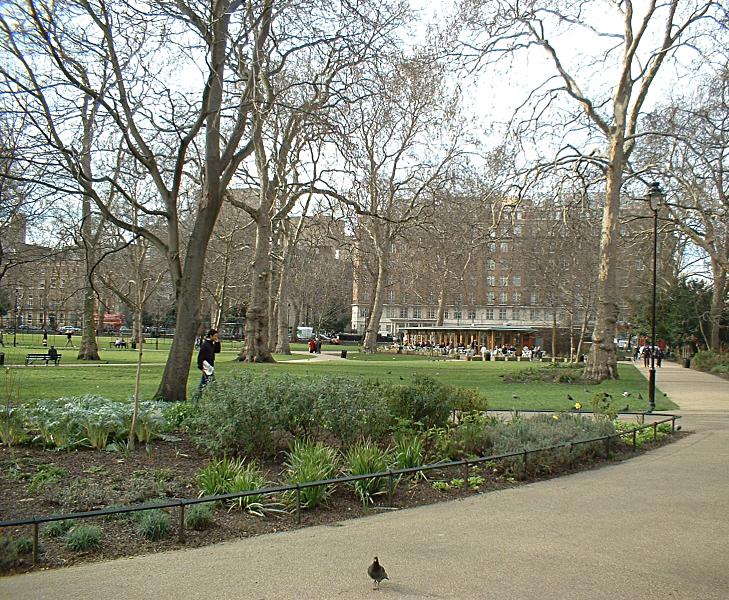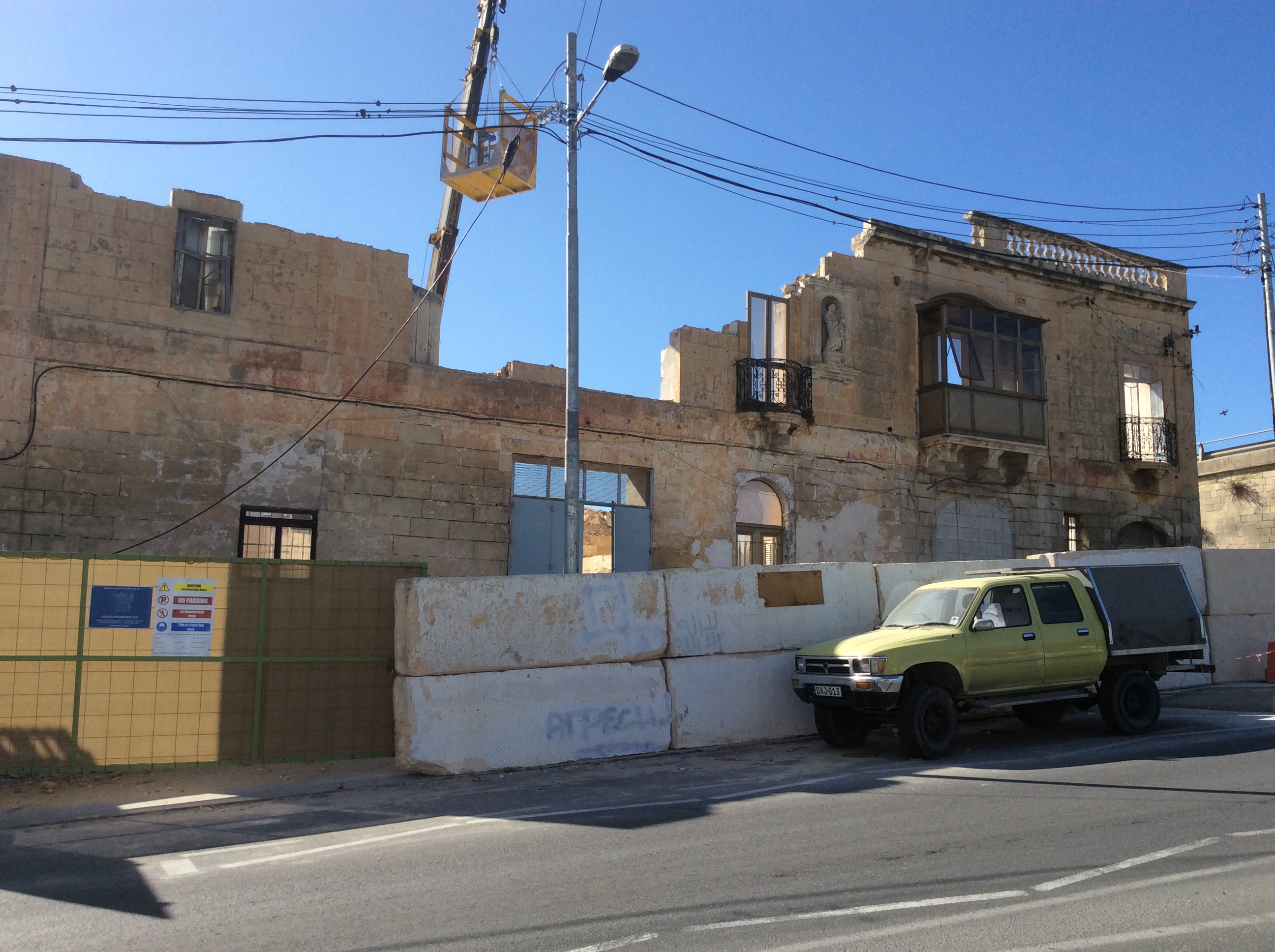|
Imperial Hotel, London
The Imperial Hotel is a hotel on the east side of Russell Square, a branch of Imperial London Hotels. Former building (1911-1966) The original building was designed by Charles Fitzroy Doll and built between 1905 and 1911. The height of the building was 61 meters and there were 15 floors. In its opening year it was used by the first all Indian cricket team to tour England. Physicist Leo Szilard was staying at the Imperial Hotel when he conceived of the atomic bomb. An extension to the hotel took place in 1913. As part of the extension, Turkish baths were constructed. The hotel had about 640 bedrooms. The building was equally colossal as its neighbour the Kimpton Fitzroy London Hotel and the architectural style was a mixture of Art Nouveau Tudor and Art Nouveau Gothic, combining terra-cotta ornaments in which the corbels, gargoyles and statues were modelled with red brick. Towers rose above a high mansard roof of green copper. A Winter Garden occupied the ground floor between ... [...More Info...] [...Related Items...] OR: [Wikipedia] [Google] [Baidu] |
Russell Square
Russell Square is a large garden square in Bloomsbury, in the London Borough of Camden, built predominantly by the firm of James Burton. It is near the University of London's main buildings and the British Museum. Almost exactly square, to the north is Woburn Place and to the south-east is Southampton Row. Russell Square tube station sits to the north-east. It is named after the surname of the Earls and Dukes of Bedford; the freehold remains with the latter's conservation trusts who have agreed public access and management by Camden Council. The gardens are in the mainstream, initial category (of Grade II listing) on the Register of Historic Parks and Gardens. In 2005, two terrorist bombings occurred nearby; one on a tube train between Kings Cross St Pancras and Russell Square, the other on a bus (Route 30, on diversion) outside the HQ of the British Medical Association on Tavistock Square. In condolence and commemoration the public and public institutions laid flower ... [...More Info...] [...Related Items...] OR: [Wikipedia] [Google] [Baidu] |
John Doulton
John Doulton (17 November 1793 – 26 May 1873) was an English businessman and manufacturer of pottery, a founder of the firm that later became known as '' Royal Doulton''. John Doulton married Jane Duneau, a widow from Bridgnorth in Shropshire, who died on 9 April 1841. They had eight children, including Sir Henry, MP Frederick, Josiah and Alfred. Biography In 1815, soon after John Doulton had completed his apprenticeship as a potter at the Fulham Pottery in London, he invested his life savings of £100 in the Vauxhall Walk pottery of Martha Jones, Lambeth Lambeth () is a district in South London, England, in the London Borough of Lambeth, historically in the County of Surrey. It is situated south of Charing Cross. The population of the London Borough of Lambeth was 303,086 in 2011. The area expe .... Her foreman, John Watts, was also taken into partnership and the firm became known as ''Jones, Watts and Doulton''. It specialized in industrial ware, brown stoneware, drai ... [...More Info...] [...Related Items...] OR: [Wikipedia] [Google] [Baidu] |
Buildings And Structures Demolished In 1966
A building, or edifice, is an enclosed structure with a roof and walls standing more or less permanently in one place, such as a house or factory (although there's also portable buildings). Buildings come in a variety of sizes, shapes, and functions, and have been adapted throughout history for a wide number of factors, from building materials available, to weather conditions, land prices, ground conditions, specific uses, prestige, and aesthetic reasons. To better understand the term ''building'' compare the list of nonbuilding structures. Buildings serve several societal needs – primarily as shelter from weather, security, living space, privacy, to store belongings, and to comfortably live and work. A building as a shelter represents a physical division of the human habitat (a place of comfort and safety) and the ''outside'' (a place that at times may be harsh and harmful). Ever since the first cave paintings, buildings have also become objects or canvasses of much artisti ... [...More Info...] [...Related Items...] OR: [Wikipedia] [Google] [Baidu] |
Hotel Buildings Completed In 1967
A hotel is an establishment that provides paid lodging on a short-term basis. Facilities provided inside a hotel room may range from a modest-quality mattress in a small room to large suites with bigger, higher-quality beds, a dresser, a refrigerator and other kitchen facilities, upholstered chairs, a flat screen television, and en-suite bathrooms. Small, lower-priced hotels may offer only the most basic guest services and facilities. Larger, higher-priced hotels may provide additional guest facilities such as a swimming pool, business centre (with computers, printers, and other office equipment), childcare, conference and event facilities, tennis or basketball courts, gymnasium, restaurants, day spa, and social function services. Hotel rooms are usually numbered (or named in some smaller hotels and B&Bs) to allow guests to identify their room. Some boutique, high-end hotels have custom decorated rooms. Some hotels offer meals as part of a room and board arrangement. In Ja ... [...More Info...] [...Related Items...] OR: [Wikipedia] [Google] [Baidu] |
Demolished Buildings And Structures In London
Demolition (also known as razing, cartage, and wrecking) is the science and engineering in safely and efficiently tearing down of buildings and other artificial structures. Demolition contrasts with deconstruction, which involves taking a building apart while carefully preserving valuable elements for reuse purposes. For small buildings, such as houses, that are only two or three stories high, demolition is a rather simple process. The building is pulled down either manually or mechanically using large hydraulic equipment: elevated work platforms, cranes, excavators or bulldozers. Larger buildings may require the use of a wrecking ball, a heavy weight on a cable that is swung by a crane into the side of the buildings. Wrecking balls are especially effective against masonry, but are less easily controlled and often less efficient than other methods. Newer methods may use rotational hydraulic shears and silenced rock-breakers attached to excavators to cut or break through ... [...More Info...] [...Related Items...] OR: [Wikipedia] [Google] [Baidu] |
Demolished Hotels In The United Kingdom
Demolition (also known as razing, cartage, and wrecking) is the science and engineering in safely and efficiently tearing down of buildings and other artificial structures. Demolition contrasts with deconstruction (building), deconstruction, which involves taking a building apart while carefully preserving valuable elements for reuse purposes. For small buildings, such as houses, that are only two or three stories high, demolition is a rather simple process. The building is pulled down either manually or mechanically using large hydraulic equipment: elevated work platforms, cranes, excavators or bulldozers. Larger buildings may require the use of a wrecking ball, a heavy weight on a cable that is swung by a Crane (machine), crane into the side of the buildings. Wrecking balls are especially effective against masonry, but are less easily controlled and often less efficient than other methods. Newer methods may use rotational hydraulic shears and silenced rock-breakers attached ... [...More Info...] [...Related Items...] OR: [Wikipedia] [Google] [Baidu] |
Hotels In London
This article describes the hotels in London, England. History Before the 19th century, there were few, if any, large hotels in London. British country landowners often lived in London for part of the year but they usually rented a house, if the family did not have their own townhouse. The numbers of business and foreign visitors were very small by modern standards, before the Industrial Revolution. The accommodation available to them included gentlemen's club accommodations, lodging houses and coaching inns. Lodging houses were more like private homes with rooms to let than commercial hotels and were often run by widows. Coaching inns served passengers from the stage coaches which were the main means of long-distance passenger transport before railways began to develop in the 1830s. The last surviving galleried coaching inn in London is The George Inn, which now belongs to the National Trust. A few hotels of a more modern variety began to be built in the early 19th century. F ... [...More Info...] [...Related Items...] OR: [Wikipedia] [Google] [Baidu] |
Constantine V Imperial Hotels Ltd
''Constantine v Imperial Hotels Ltd'' 944KB 693 is an English tort law and contract case, concerning the implied duty of an innkeeper to offer accommodation to a guest unless for just cause. Facts In 1943, Learie Constantine, a black Trinidadian professional cricketer who had played for the West Indies but lived in the UK, travelled to London to play for the Dominions team against England at Lord's. He and his family had a reservation to stay at the Imperial Hotel, London in Russell Square; he had been assured that he and his family would be welcomed and treated with the utmost respect. When they arrived at the hotel however, they were informed they could stay only one night on account of complaints about their presence made by white American military servicemen who were also staying at the hotel. According to a newspaper report, the receptionist said "we won't have niggers in this hotel". They were treated as outcasts, and Constantine was outraged. He claimed the hotel wa ... [...More Info...] [...Related Items...] OR: [Wikipedia] [Google] [Baidu] |
Amir Taaki
Amir Taaki ( fa, امیر تاکی; born 6 February 1988) is a British-Iranian anarchist revolutionary, hacktivist, and programmer who is known for his leading role in the bitcoin project, and for pioneering many open source projects. Forbes listed Taaki in their 30 Under 30 listing of 2014. Driven by the political philosophy of the Rojava revolution, Taaki traveled to Syria, served in the YPG military, and worked in Rojava's civil society on various economic projects for a year and a half. Biography Amir Taaki was born 6 February 1988 in London, the eldest of three children of a Scottish-English mother and an Iranian father who is a property developer. Taaki grew up in nearby Kent. From an early age Taaki took an interest in computer technology, teaching himself computer programming. [...More Info...] [...Related Items...] OR: [Wikipedia] [Google] [Baidu] |
Art Nouveau
Art Nouveau (; ) is an international style of art, architecture, and applied art, especially the decorative arts. The style is known by different names in different languages: in German, in Italian, in Catalan, and also known as the Modern Style in English. It was popular between 1890 and 1910 during the Belle Époque period, and was a reaction against the academic art, eclecticism and historicism of 19th century architecture and decoration. It was often inspired by natural forms such as the sinuous curves of plants and flowers. Other characteristics of Art Nouveau were a sense of dynamism and movement, often given by asymmetry or whiplash lines, and the use of modern materials, particularly iron, glass, ceramics and later concrete, to create unusual forms and larger open spaces.Sembach, Klaus-Jürgen, ''L'Art Nouveau'' (2013), pp. 8–30 One major objective of Art Nouveau was to break down the traditional distinction between fine arts (especially painting and sculptu ... [...More Info...] [...Related Items...] OR: [Wikipedia] [Google] [Baidu] |







̠1943̠Warwick_Modern_Records_Centre.jpg)